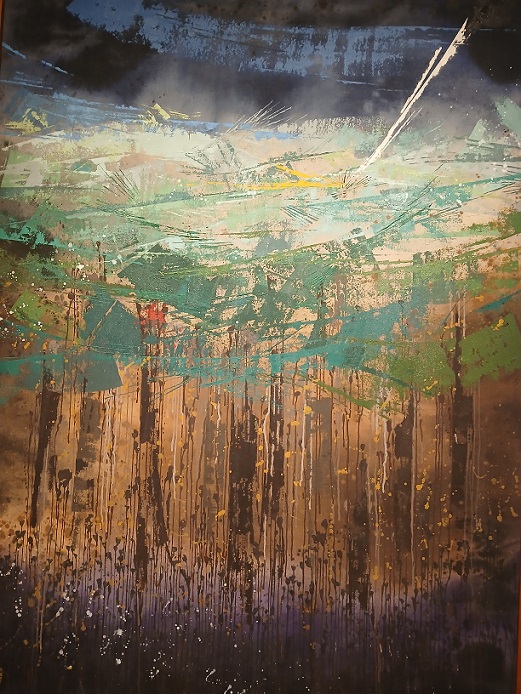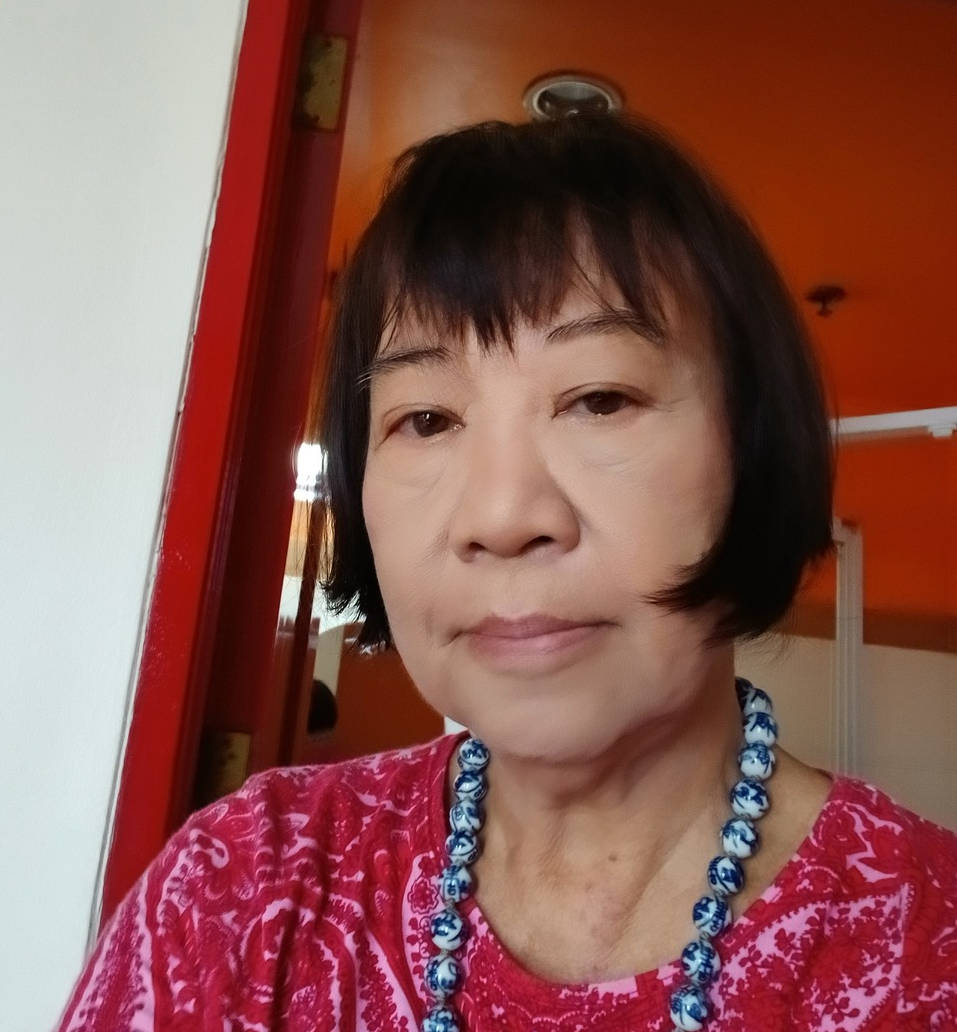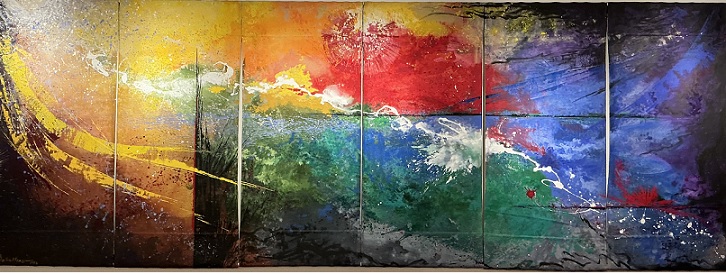
It is the artist’s 44th solo exhibition and her first one at the National Museum of the Philippines titled Phyllis Zaballero: Landscapes of the Mind at Gallery XV1I, 3/F National Museum of Fine Arts.
The exhibition focuses on Zaballero’s early abstract works from the 1970s-1990s that are “meditations on memory—fluid, layered, and deeply personal,” and revisits her exploration and experimentation in abstract expressionism.
Zaballero uses a bold language, with strong gestural swirls, streaks, and splashes that convey the force of emotions and expressions. In A Study of a Woman’s Life in Six Acts (1992), an immense work of six canvases almost six meters long, she channels her emotive intensity in swirling patterns across a fiery field of orange, yellow, blue, and green. The work speaks of the struggles and barriers that women face in their lives, and the strength and imagination that carry them through, ultimately triumphant.
A look behind the artist’s work, the exhibit includes a visual guide in eight stages on how the above-mentioned work had been done from concept and planning stage, canvas preparation, image development, final details, and documentation.

Among the 19 works on display, Acquainted with Lighting (1990) is inspired by Marjorie Evasco’s poem of the same title. A printed copy of the poem hangs beside the painting. It praises trees standing tall in a tropical jungle, surviving nature’s strikes and man’s destructive actions amidst the changing climate.
It also explores the artist’s black-and-white series and her grid paintings. Among the black-and-white works are Carouge Triptych I (1978), Cirrus I (1980), and Nimbus V (1980).
In hindsight, Zaballero observes that doing grid painting was a much more measured style than her other abstracts, adding that our lives are run by right angles. The earliest work in the exhibit is 1976, her first grid painting in shades of blue and white.
Giuliana II (1982), a heavily-textured grid work, is comprised of 16 smaller grids in black or white, with horizontal and vertical lines, each one different from the other, topped with layers of paint in splatches and splatter, thin streaks, fine white lines, swirls of grey, or thicker paints pooling at the edges.
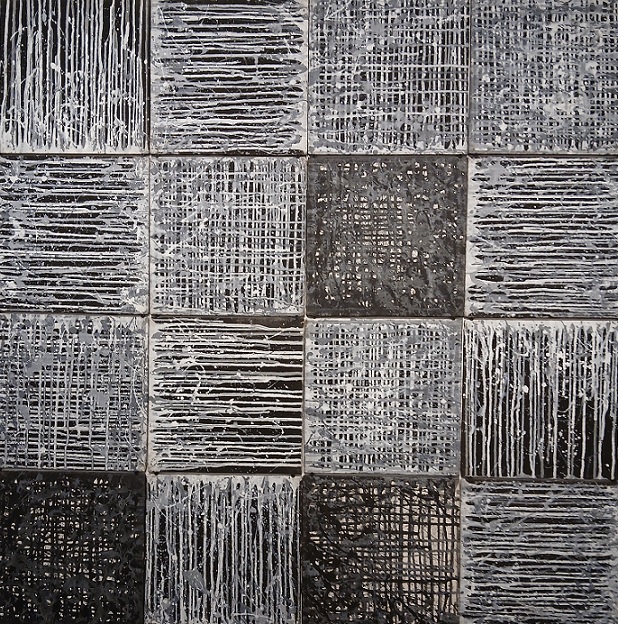
Naming a work
In one corner of the gallery, a CCP Cultural Cache Online video plays on, with Zaballero explaining her art practice. She loves geometrics and colors, and feels compelled to interject splashes of bright colors in her work to reaffirm her own self and identity.
Giving a title to a work remains a deep, intellectual process for her. “Without a name, it’s like it was never born.”
Memories and emotions are linked intricately with Zaballero’s abstractions. It may be a place, a time and season, or people. Aside from being visual, abstraction conjures memories of what she was doing, the people she was with, and her feelings at the time. All these physical and emotional stimuli would be translated into an abstract form.
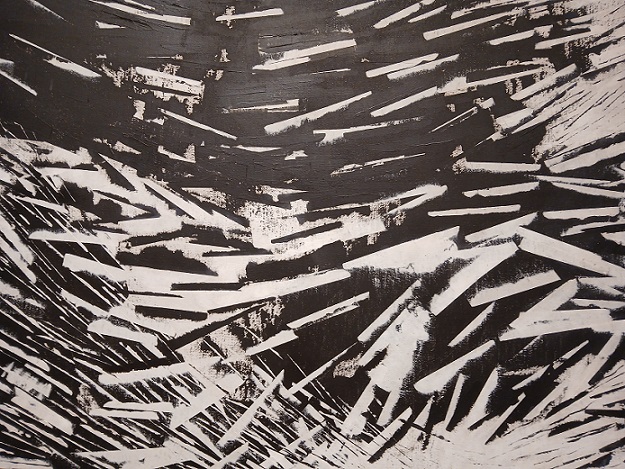
With an artistic career spanning 50 years, vibrant and multicolored works have defined her art practice from abstraction to representational painting.
In recent years, she has been tying loose ends, digging out unfinished works and finishing them, poring over her old sketchbooks, using pencil, pen and ink, and adding something new to her old sketches, illuminations, she calls them. It’s going back to the basics, she says.
Phyllis Zaballero (b. 1942, Rosario, Cavite): Born as Maria Felicitas del Rosario, she uses her nickname, Phyllis, and her married name as her artistic name. Spending her young life in the United States and Europe, she was exposed to art early, going to museums, and she always wanted to be an artist.
Primary and secondary schools were spent in Boston, United States and Geneva, Switzerland; junior college years in Paris, France and Barcelona, Spain. With an economics degree (1964) from the University of the Philippines Diliman, she went back to U.P. at the age of 32, married and with three sons, and earned a BFA in painting in 1978.
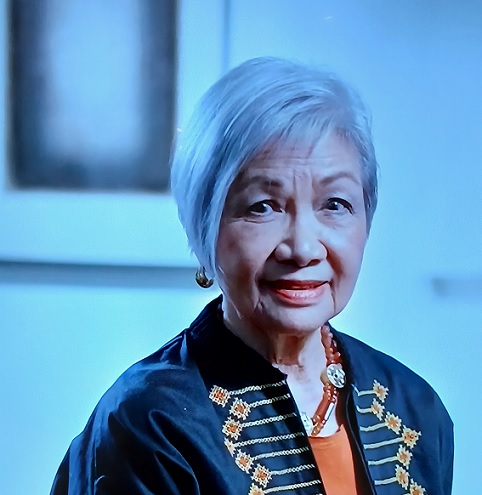
At the age of 10, she saw her first Jackson Pollock (1912-1956) work, One:Number 31, 1950 (1950) in Museum of Modern Art, New York. Mesmerized, she stared at it for a long time. She considers Pollock as “the greatest influence” in becoming an artist. In taking the path of abstract modernity, she acknowledges the lifelong influences of Roberto Chabet (1937-2013), the renowned Filipino conceptual artist, and Raymundo Albano (1947-1985), CCP’s museum director,1970-1985.
In university, she was in the class of Chabet where they did a lot of mixed media work and he always talked about the new abstract artists; she also worked as an assistant to Albano at the Cultural Center of the Philippines.
In 1978, she was a recipient of the Thirteen Artists Awards, CCP; her first solo exhibition, Zaballero, Paintings, was at the CCP Art Gallery in the same year. In 2024, she has participated in a special exhibit by ArtF air Philippines titled PAMBABAE Exploring Abstraction by Women Artists 1969-1989.
